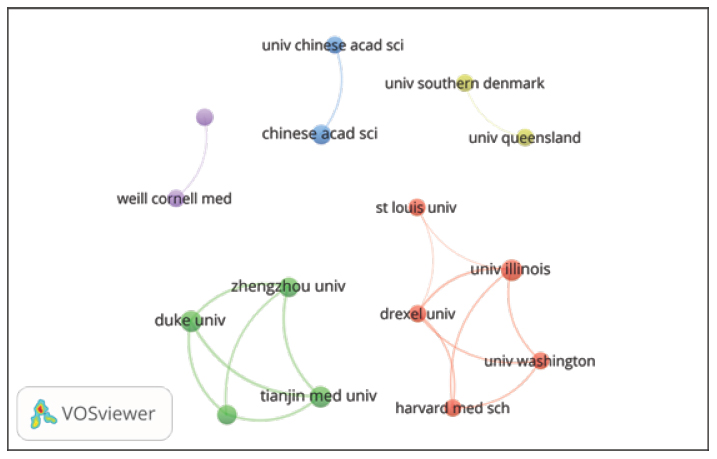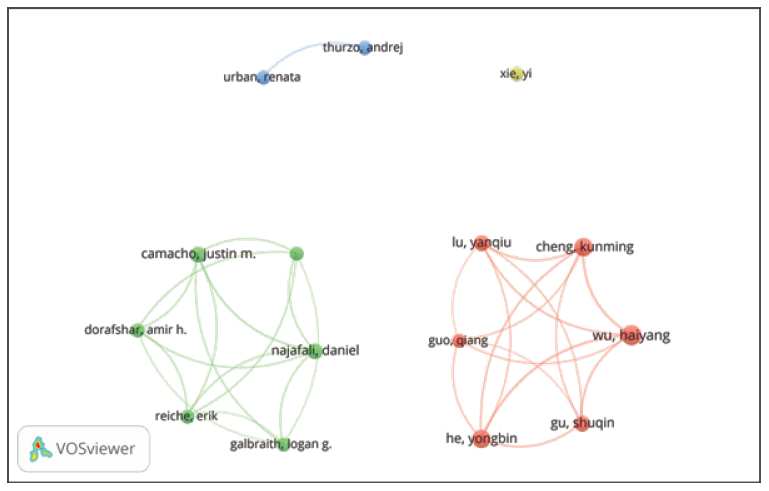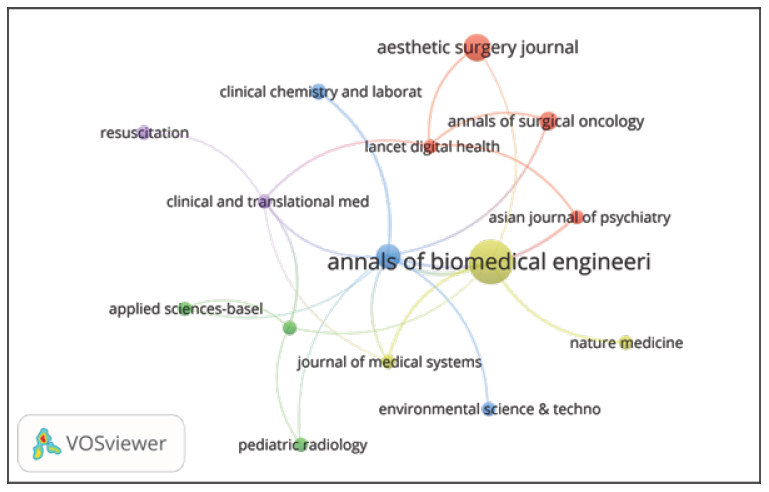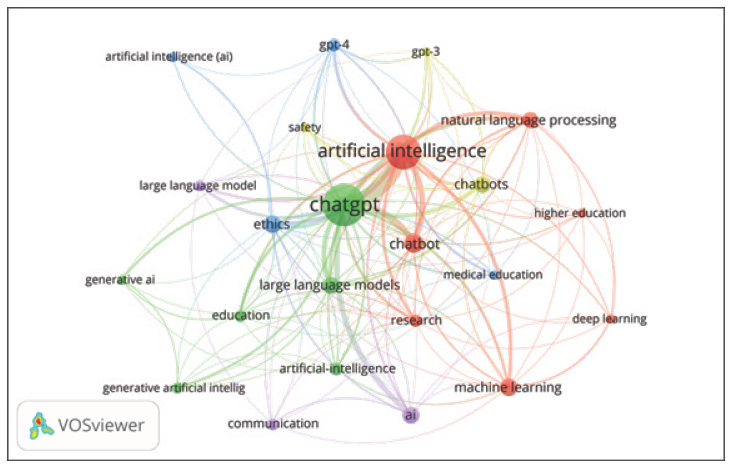The authors are affiliated with various universities and institutions in different countries, including China, the USA, Slovakia, and Australia. The 971 authors participated in 333 global papers in ChatGPT research within the year of 2023: 4 authors contributed 1-5 publications each, only one author contributed 5-6 publications. Among 15 top authors, the dominant participation comes from USA authors, followed by 5 from China, Bratislava 2 authors and one author from Australia. The individual research output of the top 15 authors varied from 3 to 6 publications per author and together contributed 56 publications and 112 citations, which present 3.73% and 7.46% share of global publications and citations in ChatGPT research.
Wu, Haiyang from Anhui University of Chinese Medicine in China has 6 publications, 13 citations, a Citation per paper of 2.167, and Total link Strength of 21, Cheng, Kunming from Zhengzhou University in China has 5 publications, 9 citations, Citation per paper of 1.800, and a Total link Strength of 19, He, Yongbin from Beijing Sport University in China has 5 publications, 13 citations, Citation per paper of 2.600, and a Total link Strength of 19, Camacho, Justin M. from Drexel University in the USA has 4 publications, 8 citations, Citation per paper of 2.000, and Total link Strength of 16, Gu, Shuqin from Duke University in the USA has 4 publications, 12 citations, Citation per paper of 3.000, and Total link Strength of 16 etc., (Table 5).
Table 6 provides a comprehensive overview of various journals that have published articles related to ChatGPT. Among the listed journals, several notable publications stand out. The Annals of Biomedical Engineering leads the list with 30 articles published on ChatGPT, resulting in a moderate TC of 38. These articles have received an average of 1.267 citations each, indicating a decent level of interest and impact within the field. The journal’s TLS score of 12 reflects its contributions to the research community.
Description Results Main information about data Timespan 2023 Sources (Journals, Books, etc.,) 200 Documents 333 Average citations per doc 2.303 References 5976 Document Contents Keywords Plus (ID) 170 Author’s Keywords (DE) 561 Authors Authors 932 Authors of single-authored docs 86 Authors Collaboration Single-authored docs 99 Co-Authors per Doc 3.31 International co-authorships % 24.62 Document Types Article 119 Editorial material 105 Letter 85 Review 14 News item 9 Book review 1 Table 1:
Figure 2:
Top 15 Organisations collaborations network map

Figure 3:
Top 15 Authors collaborations network map
Nature, a highly regarded scientific journal, has also delved into ChatGPT with 9 published articles. These papers have garnered significant attention, accumulating a high TC of 244. With an impressive CPP of 27.111, these articles have been widely cited, emphasizing their importance in advancing the understanding of ChatGPT. Nature’s substantial TLS of 20 underscores its prominent position in the scientific community.

Figure 4:
Top 15 Journal Co-citations network map

Figure 5:
Top 15 selected keywords Co-occurrence network
Other journals, such as Aesthetic Surgery Journal, Clinical Chemistry and Laboratory Medicine, and Journal of Medical Systems, have contributed with a smaller number of publications. However, they have made notable impacts within their respective domains. For instance, the Aesthetic Surgery Journal’s 11 articles have achieved a TC of 20, indicating recognition within the field. The Clinical Chemistry and Laboratory Medicine journal, with 4 articles, has achieved a reasonable CPP of 0.750, suggesting that its publications have attracted attention and contributed to the advancement of knowledge. It is important to note that the remaining journals listed in the Table 6 have also played a role in the dissemination of ChatGPT-related research. Each journal has contributed to the field to varying degrees, as indicated by their respective TC, CPP, and TLS values. Collectively, these publications provide valuable insights into the development and Applications of ChatGPT, contributing to the ongoing exploration and understanding of this technology (Figure 4 and Table 6).
Sl. No. Country TP TC CPP HI TLS %TP 1 USA 111 208 1.874 7 67 33.234 2 China 40 87 2.175 4 32 11.976 3 India 26 34 1.308 3 24 7.784 4 England 25 78 3.12 4 33 7.485 5 Australia 22 42 1.909 4 26 6.587 6 Germany 18 45 2.5 3 27 5.389 7 Italy 16 58 3.625 3 25 5.09 8 Switzerland 14 59 4.214 3 30 4.192 9 Netherlands 12 87 7.25 4 25 3.593 10 France 9 32 3.556 1 26 2.695 11 Spain 8 25 3.125 2 16 2.695 12 Austria 7 16 2.286 2 13 2.096 13 Sweden 7 15 2.143 3 20 2.096 14 Scotland 5 38 7.6 3 13 1.497 15 South Africa 5 28 5.6 2 19 1.497 325 852 52.285 Table 2:
留言 (0)